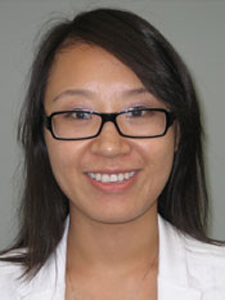Program Information
Impact of Patient Anatomy On Patient-Specific CT Dose: Initial Clinical Study
Q Liang*, L DeWerd, University of WI-Madison/ADCL, Madison, WI
MO-D-134-7 Monday 2:00PM - 3:50PM Room: 134Purpose: AAPM report TG-204 suggests using size-specific dose estimates (SSDE) as a patient CT dose reporting method. SSDEs are calculated by applying a correction factor, which is based on the patient outline size, to CTDIvol. The suggested correction factors were determined with phantom measurements or Monte Carlo simulations from four independent research groups, which utilized uniform or mostly solid phantoms. However, in some clinical CT examinations such as CT colonoscopy, considerable portions of the scanned anatomy are gas, which is quite different from the condition under which TG-204 was established, and SSDEs may not be sufficient in these cases. The purpose of this work is to demonstrate this limitation with Monte Carlo dose calculations using patient CT images.
Methods: CT images from two patient scans were used to perform Monte Carlo simulations: a normal abdomen/pelvis scan and a CT colonoscopy. The patient sizes were similar according to outline dimension measurements. For Monte Carlo dose calculations, the same scanning parameters were simulated to ensure identical CTDIvol in the two cases. Bony anatomy was identified by thresholding and the mean dose to bony structures was calculated by averaging the three-dimensional dose distribution. Left and right kidneys were contoured for organ dose calculations. Effective diameters were measured, and the correction factors were obtained from TG-204.
Results: The size-specific conversion factors were 1.37 for both patients, thus the SSDEs of the two cases were the same in this study. The MC-calculated mean doses from the normal abdomen/pelvis scan were higher than those from the CT colonoscopy by 7.5%, 6.5% and 12.8% for bony anatomy, left kidney and right kidney, respectively.
Conclusion: The impact of patient anatomy on CT dose was demonstrated using patients of the same size. This effect should be considered for special clinical cases.
Contact Email:


